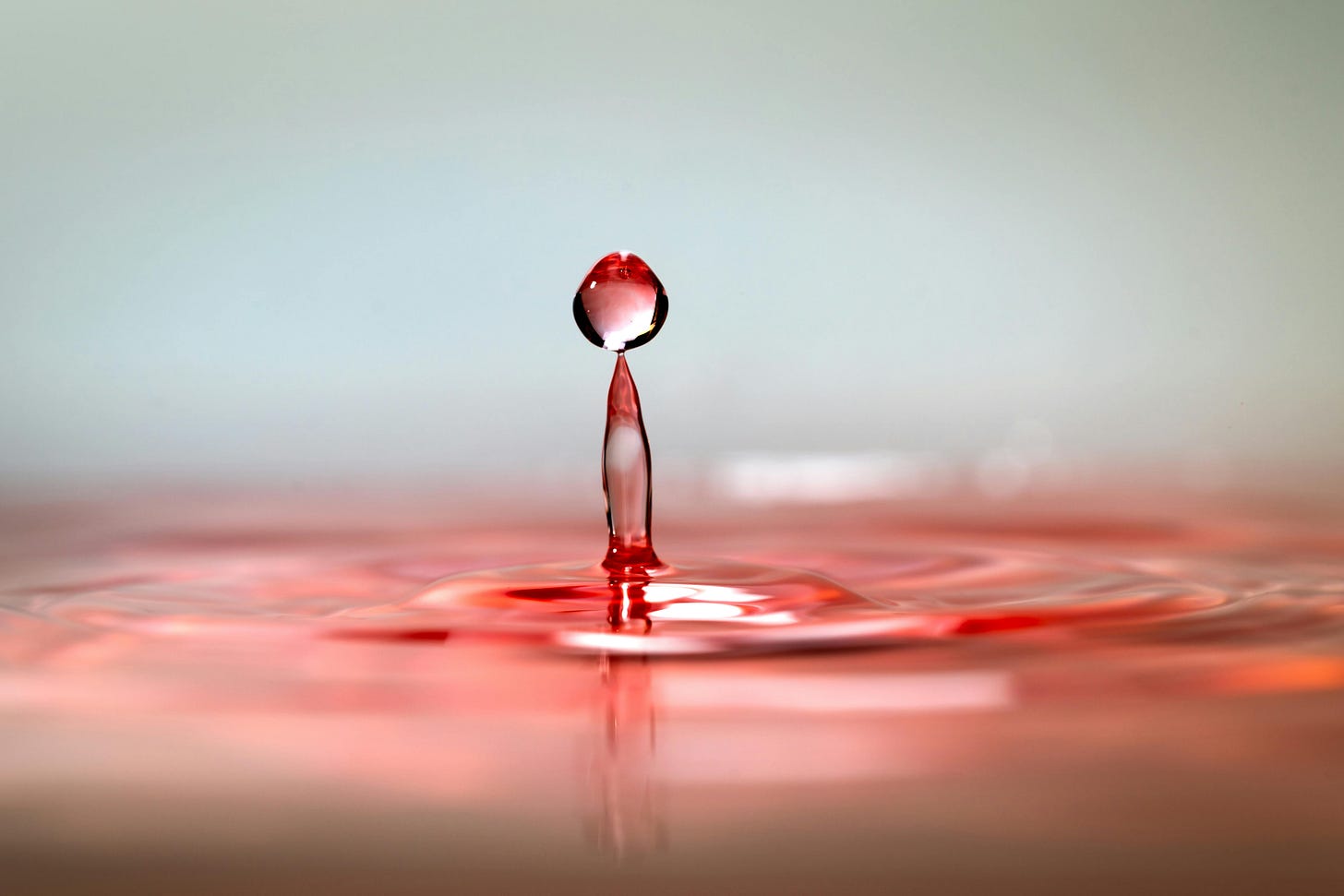Red #3: The Synthetic Food Dye that Was Finally Banned in 2024
This toxic food dye is no longer legal.
Valentine’s Day is a Hallmark Holiday known for fancy dinners, romance, chocolate, champagne, and…
Red candy.

Okay, quick story.
Scroll down to skip it and read on about Red #3. 👇
Before I met my husband, I hated Valentines Day.
Over the years, I have heard many people lovingly (sarcasm) refer to this ‘very special day’ as Singles’ Awareness Day (S.A.D.).
I was single and alone every Valentine’s Day… except for one year.
That one year, I was dating this guy who was somewhat aimless, kinda reckless in a fun sort of way, and tall like me; I’m 6’0” and he was 6’11”. If you’re a tall woman, you can appreciate my predicament and understand why I put up with the b.s. to have a tall boyfriend.
On that particular V-Day, he took me out to a very nice à la carte steak restaurant to celebrate. When the bill came, he said, “Got your credit card, honey?” 😮
And then, on the way home, we got pulled over for speeding (he was driving). 😠
I was a dumb twentysomething and got out of the car to beg the police officer to give us a break. On the brink of losing my mind, I shared a sob story about how I’m the one who is going to have to pay for the speeding ticket after paying for my own V-Day dinner. 😢
We still got a ticket, but that nice police officer definitely gave us a break.
And yes - I totally dumped that loser.
Okay, enough of that…
Hopefully, you have some happier V-Day stories!
👉 So, let’s get back to the topic.
Why is Red #3 So Bad?
Red #3 is also known as Erythrosine, a synthetic cherry-red dye made from petroleum-based compounds.
Erythrosine: chemical formula C₂₀H₆I₄Na₂O₅
Red #3 was used in many cosmetics (e.g.: blush, lipstick, and mascara) before it was banned in 1990 for cosmetics only.
And, it was used in a wide variety of medications and food products (e.g.: red candy, cough syrup, and children’s allergy medication) until it was banned in 2024 for food products.
The following are just a few of the illnesses, reactions, symptoms, and research findings tied to products containing Red #3:
Thyroid Tumors & Cancer Risks
Animal studies, particularly in rats, have shown that high doses of Red #3 can cause thyroid tumors.
Hyperactivity & Behavioral Issues in Children
Like other artificial dyes, Red #3 has been linked to increased hyperactivity, ADHD symptoms, and learning difficulties in some children.
Allergic Reactions & Sensitivities
Some people experience skin rashes, itching, or headaches after consuming Red #3, similar to reactions seen with other synthetic dyes.
Potential Endocrine Disruption
There are concerns that Red #3 may affect hormone levels by interfering with thyroid function.
Food Intolerance Symptoms
Some individuals report digestive issues, bloating, or discomfort after consuming foods with artificial dyes, such as Red #3.

20 Well-Known Products that *Had* Red #3
You may be surprised to discover how many well-known products contained Red #3 before it was banned:
Note: these products no longer have Red #3 due to the 1990 cosmetics ban and the 2024 food and medications ban.
🍬 Food Products
Maraschino Cherries
Peeps Marshmallow Chicks
Good & Plenty
Hostess Cupcakes
Betty Crocker & Pillsbury Cake Decorations
Hot Tamales (candy)
Mike and Ike (candy)
Gummy Bears (various brands)
💊 Medications & Supplements
Children’s Tylenol Chewables
Delsym Cough Syrup
Sudafed PE (some red-coated tablets)
Bayer Chewable Aspirin (cherry-flavored version)
Benadryl (Cherry & Bubblegum Flavors)
Certain Vitamin Gummies
💄 Cosmetics & Personal Care
Maybelline Great Lash Mascara
Revlon Super Lustrous Lipstick
CoverGirl Cheekers Blush
L’Oreal Preference Hair Dye
L’Oreal Blush (certain shades)
Nail Polishes (various brands)

Why did it take so long to ban Red #3?
For years, despite clear health risks, Red #3 stayed on the market because the U.S. Food and Drug Administration (FDA) required a higher level of proof before pulling it from food.
Consumer advocacy groups, like the Center for Science in the Public Interest (CSPI), had been pushing for a ban for decades, but progress was slow.
It wasn’t until 2024 - after mounting public awareness and legal pressure - that regulators finally took action and banned it from food.
Read more about the efforts to ban Red #3 here (this is a Wikipedia link to “Erythrosine”).
The best thing you can do to protect yourself from the risks of food and cosmetic additives like the ones I mentioned in this article is to Read the Labels.
Especially beware because the Red #3 ban does not mean that all red food dyes are banned. Food producers are switching their ingredients to favor Red #40 as a replacement to Red #3.
For a growing list of ingredients that could be making you sick:
If you’re not sure about a specific ingredient and want to learn more about whether it qualifies as Goo, leave a comment or reach out and ask me!
And if you enjoyed reading this story, but aren’t ready to subscribe, you can:
(a Goo-Free coffee, of course!)




